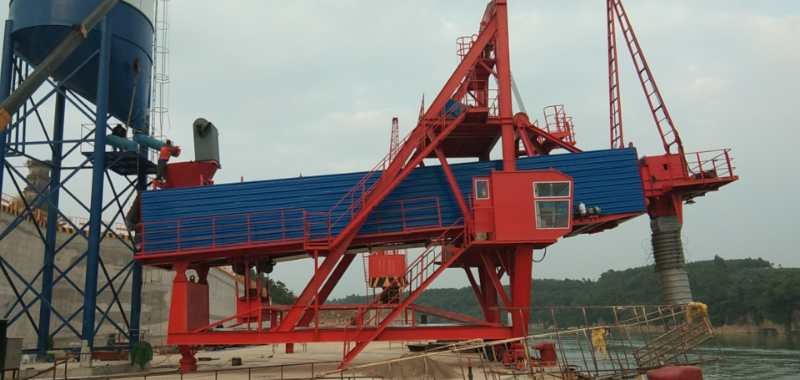Choosing the right ship loader is a critical yet complex decision. Poor selection leads to operational inefficiency, costly downtime, and frustrated teams. With 20 years of expertise in designing and manufacturing ship loaders, I’ve seen how the right model transforms port operations. Let’s simplify your decision-making process.
Focus on six core factors: material type, loading capacity, mobility needs, automation level, maintenance simplicity, and environmental adaptability. At Newtech, we engineer shiploaders that excel in all these areas—delivering unmatched efficiency, ease of use, and cost-effectiveness. Whether you’re handling coal, grain, or minerals, our solutions are built to last and perform.
Still unsure where to start? Let’s break it down step by step.

What Material Types Are You Handling?
Types: Coal, ore, grain, cement and other materials have different densities, fluidity, corrosiveness and particle sizes.
Humidity and viscosity: Viscous materials (such as wet ore powder) require anti-clogging design (such as vibrating chute).
Fragility: For example, coke needs to reduce the drop height to reduce breakage.
Environmental requirements: Dusty materials (such as coal) need to be equipped with closed conveying or dust removal systems.
At Newtech, our loaders use customizable components to handle diverse materials efficiently.
What Loading Capacity Do You Need?
Underestimating capacity leads to bottlenecks. Overestimating wastes resources. Calculate your peak hourly throughput and seasonal demands. Our models scale from 500 to 5,000 tons per hour, ensuring you never compromise on efficiency.
How Important Is Mobility Or Other Type for Your Operations?
| Type | Application | Advantage | Limit |
| Fixed type | Large-scale specialized wharf (coal wharf) | Stable structure, high efficiency (up to 8,000 tons/hour) | Poor flexibility, only applicable to a single berth |
| Mobile type | Moving along the wharf by rails or tires, covering multiple berths and multi-cargo wharfs | Strong maneuverability, adaptable to different ship types, can cover multiple ship berths | High cost |
| Revolving type | Complex loading scenarios where ship displacement needs to be avoided (such as narrow ports) | The boom can rotate horizontally (usually 360°) to accurately adjust the drop point | Complex structure, high maintenance cost |
| Cantilever type | Inland wharf or small and medium-sized ports | Loading range can be adjusted by retractable cantilever, compact structure, low investment | Limited coverage (usually <30 meters) |
What Automation Features Are Essential?
Automation reduces human error and labor costs. Look for programmable logic controllers (PLCs), real-time monitoring, and anti-collision systems. Our loaders include intuitive interfaces—even for operators with minimal training.
How Does Maintenance Simplicity Impact Long-Term Costs?
Complex maintenance drains budgets. Opt for models with accessible components and modular designs. Newtech’s shiploaders feature bolt-on replaceable parts, cutting downtime by up to 40%.
What Environmental Factors Should You Consider?
Coastal winds, dust, and corrosion threaten equipment longevity. Our loaders use marine-grade coatings, enclosed conveyors, and dust suppression systems. These features ensure reliability in harsh conditions.
What Budget Constraints Are You Facing?
Balance upfront costs with lifetime value. Cheap models often incur high repair expenses. Newtech offers competitive pricing without compromising durability. Our loaders reduce energy consumption by 15–20%, delivering ROI within 2–3 years.
How Do Local Regulations Influence Your Choice?
Exporting to countries with strict emissions or safety laws? Ensure your loader meets international standards like ISO 9001. We certify all equipment for global compliance, smoothing customs processes.
Conclusion
Selecting a shiploader isn’t just about specs—it’s about aligning with your operational reality. Prioritize adaptability, ease of use, and total cost of ownership. At Newtech, we’ve spent two decades refining solutions that check every box. Ready to optimize your port? Let’s discuss your needs at ruby@cnnew-tech.com.
